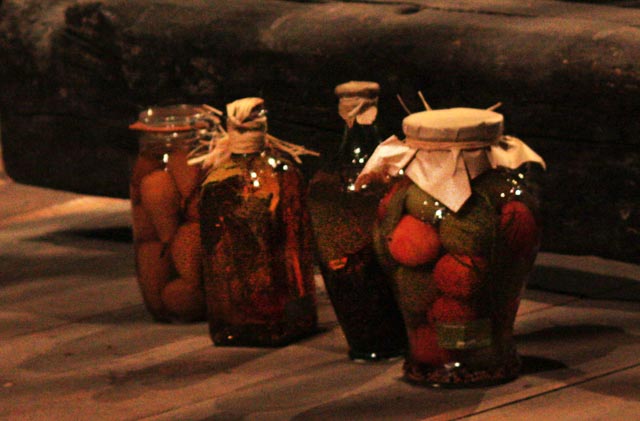Nature and Culture Trail Klockarudden
9. Life on the Croft
These stone foundations are a reminder of a time when people were self-sufficient. Preserving and storing fruit and berries, fish and meat were a natural part of traditional housekeeping. Knowing how to make good apple puré, how to stop blackcurrants and redcurrrants turning into jelly when making fruit cordial, how to stop food going mouldy – all these were skills handed down from mothers to their daughters and maids, and were part of the basic knowledge which every woman acquired. During the late summer and autumn, the stores would be filled for winter. Turnips and potatoes would be stored in the outdoor food cellar. Perhaps the shelves would be filled with bottles and jars of lingonberries, bilberry jam and fruit cordials.If you walk down to the shore (be careful - the terrain is very rough!) you’ll see the remains of a harbour which is now on dry land. Two stone piers build its entrance. It was probably intended for small fishing boats. It could also have been used for hauling up boats.The crofters may well have lived their hard-working existence until the summer of 1719. On the morning of July 14th that year the great Russian galley fleet came sailing in towards Djurhamn. This was at the end of the Great Northern War, the war in which King Charles XII was killed in Norway in 1718. The following year, the Russians wanted to force the Swedes to the negotiating table by means of a massive attack on the Swedish coast. All summer, the Russian fleet sailed sailed up and down the coast burning and pillaging. On Djurö everything except the church was burned down and virtually the entire population of the archipelago was made homeless. We can be fairly sure that the croft at Tvärbommen on Skepparön was affected. In January 1720, landowner Niclas van Höpken wrote “The whole of Djurö has been laid waste by the enemy’s depredations”.To get to stop number 10, continue along the jogging track for a short while and then turn right.
|













